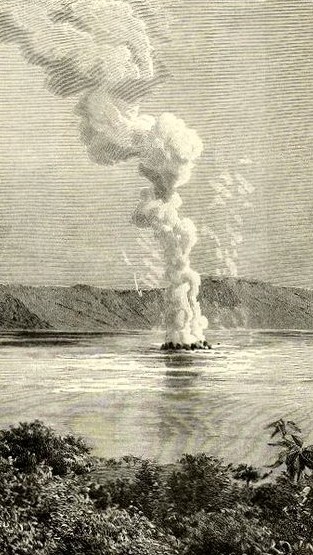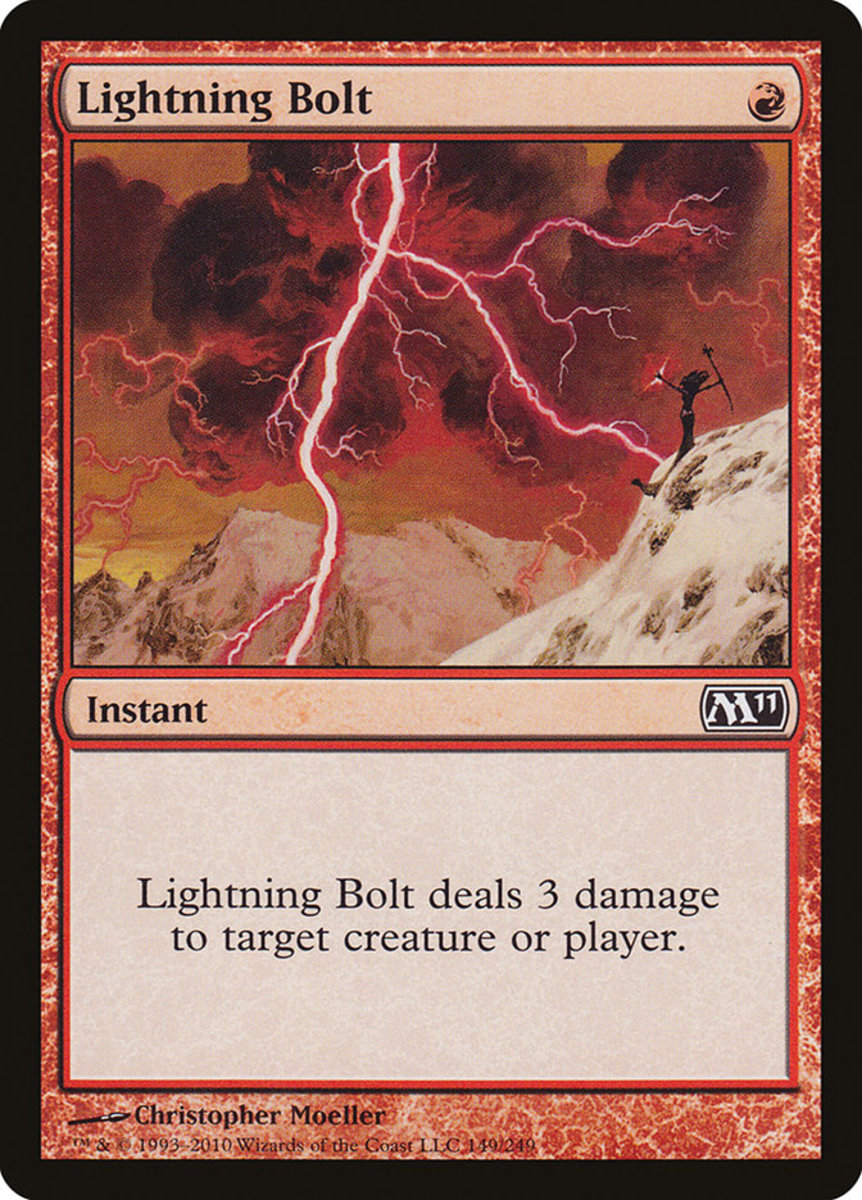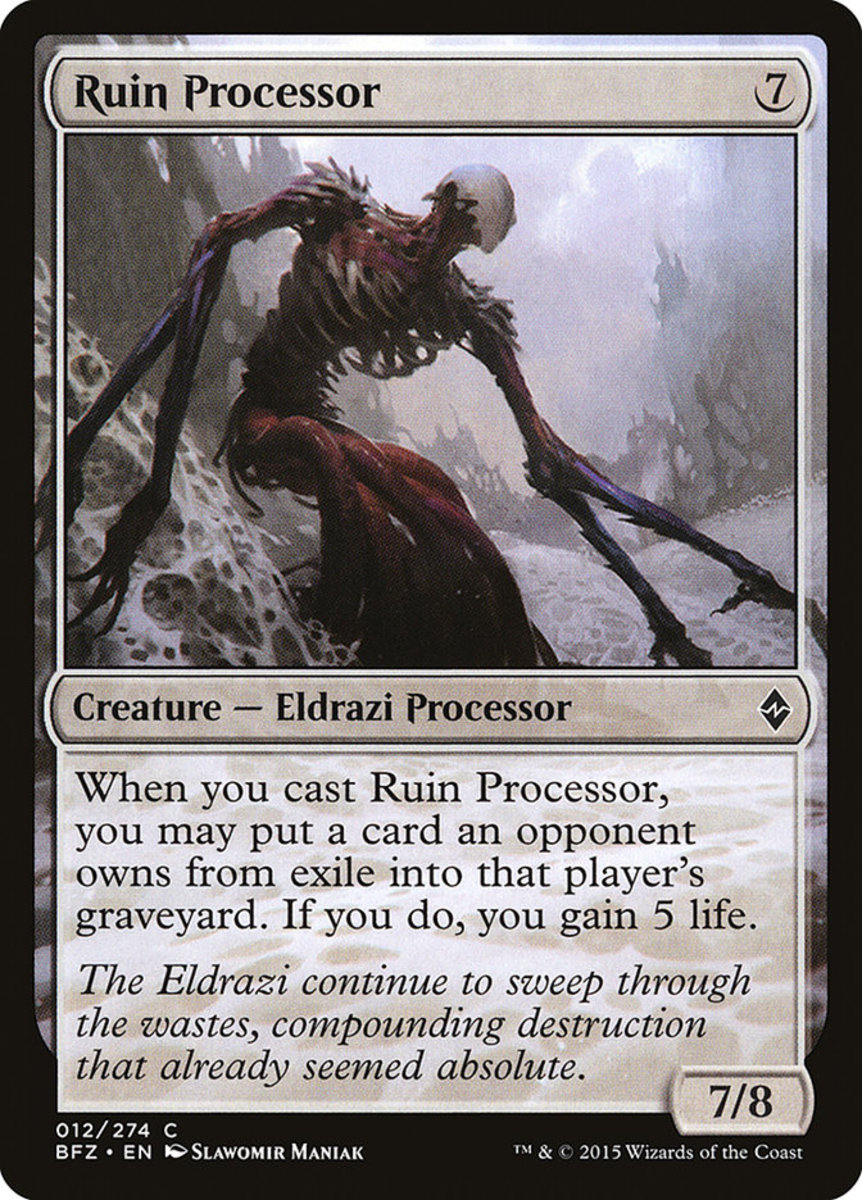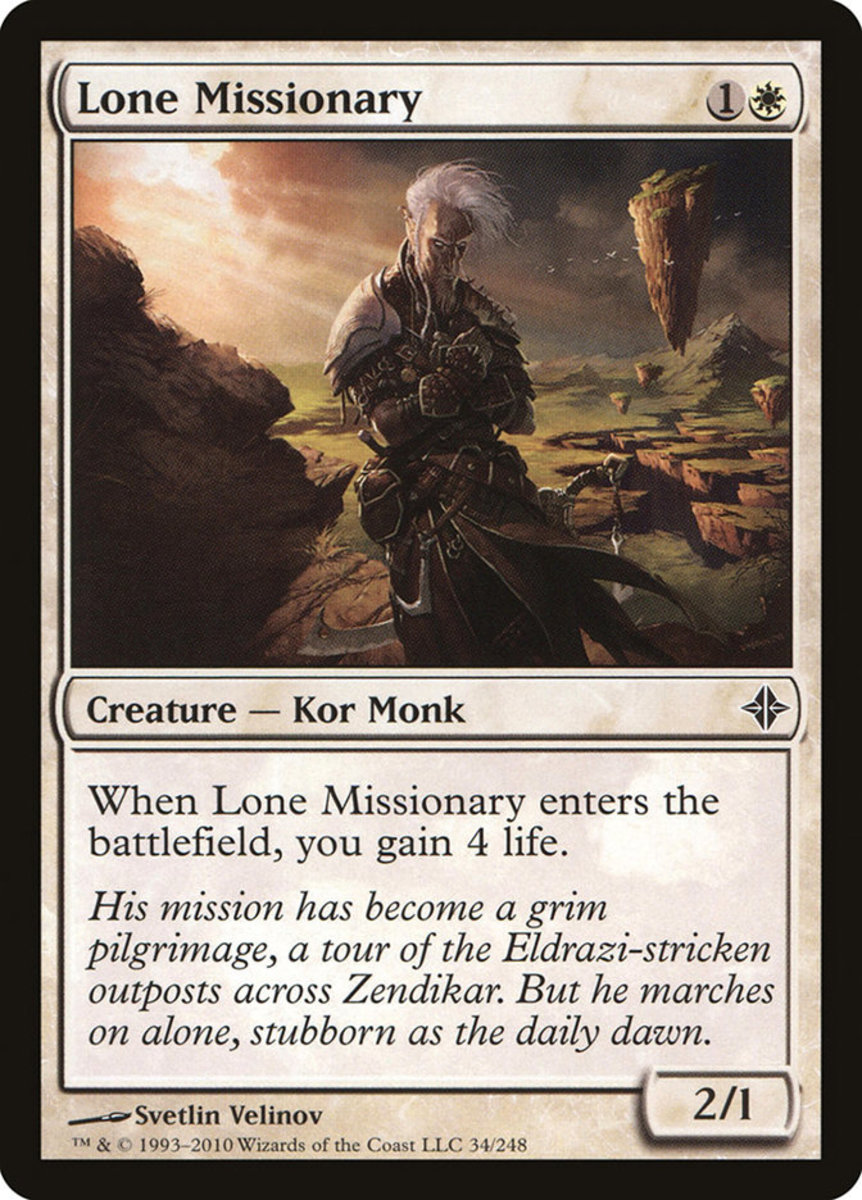- HubPages»
- Games, Toys, and Hobbies»
- Card Games»
- Collectible Card Games
Magic the Gathering, Land Destruction

If spells need mana and mana comes from land, why not just destroy the land? Enter Mtg Land Destruction.
The most hated deck type?
I have heard land destruction called “the most hated deck archetype”. When it is in peak form (i.e. the opponent’s hand is full of cards they can’t play and most of their land is gone) land destruction can be agonizing. But it doesn’t have to be a hated archetype. All you have to do is worn your opponent that you’re playing a land destruction deck, and perhaps throw in a free mulligan when they don’t draw into land. In a casual game where a player has multiple decks, they’ll play a deck that won’t fall apart to land destruction and you’ll have a challenge and hopefully a good game. Trying to get enough stuff out of your hand before your mana base is destroyed makes for a tense game where anything can happen. Land destruction is also a great deck to play test against. When you play against a land destruction deck. It will teach you about your deck’s mana curve. Nothing points out a curve too high than land destruction. Since win conditions tend to run on the higher side, the land destruction deck also points out how the lower end of your deck works. So without further ado, this is how to build a good land destruction deck:
Attack the mana base in every color
The first thing to remember is that every color is capable of attacking your opponent’s mana. They just work differently. White is a good for board clearing destruction (Armageddon). The idea is simple. You design your deck to run or 3 or less mana, then wipe the board with Armageddon. Then move in for the kill. Off course, loading your deck with 12-16 Armageddon effects isn’t particularly effective, so I rate white as the worst land destruction color. Armageddon is a win condition, not something to build a deck around. Blue doesn’t really destroy lands but it is easy to render them unusable. If anyone would claim blue to not be a potent mana killer, they’ll change their minds against a deck of 4 Illusionary Terrains, 4 Mana Shorts, 4 Parallax Tides, and 4 Gigadrowses. (My first land destruction was red/blue.) Red, green, and black all have land point destruction which is the main focus of this article.
3 and 4, the magic numbers
Unless you’re playing against a deck that crumbles in the face of land destruction (see etiquette above), you have a short window to lock someone down with land destruction. You need to be destroying your opponent’s lands on the third turn. The cheapest land destruction cards (with the exception of $40 Sinkhole) cost three mana and need to be played as soon as possible. If you are going to be destroying land (generally the most common permanent in a deck) you’ll be needing to cast land destruction spells every turn, until your intended player has no more in hand. You cannot afford to have to deal with any card from your opponent of four mana or more while you’re trying to tie them down. This does not mean all your land destruction spells have to be three mana but a good portion (i.e. 8) should. You’ll also want to keep your remaining land kill spells at 4 mana, so that they can help bolster that third turn land kill. I wouldn’t play a five cost mana killer unless it was a win condition or if my mana ramp could reliably get that spell cast turn four (i.e probably green). I cannot overstress the importance of your enemy not getting a fourth land drop. By way of example, I was playing against a heavily proxied zombie deck with all the spoils (guy wanted to see if the deck was worth paying $200 to buy). If he had gotten the mana to play Undead Warchief, I would have had to answer, taking time away from my land killing. He would have gotten another land and his deck would have started running as his deck was full of 5 mana nasties. However, he never got that fourth land and I won.
Pick a color:
Red- Red is my first choice when it comes to land destruction. It has what I consider the workhorse of land destruction: Stone Rain. It’s the right cost both in terms of converted mana and its ability to splash a second color should you desire. The only other equivalent is the green Ice Storm (expect to pay $40 a playset). Red also has another workhorse, Pillage. Your opponent often has nonland sources of mana. Creatures can be dealt with by direct damage, and artifacts can be taken care of by Pillage. Its converted mana cost is also three. In addition to these workhorses red brings direct damage to the table. Red is my primary color for any land destruction deck.
Green- Green brings two things to the table: enchantment destruction and mana ramping. However, green seems to me to be a completely illogical color for a land destruction deck. Why go to the trouble of locking your opponents at 2-4 lands when green can just mana ramp into bigger and better creatures? Given green’s problems with creatures I’d never consider this a primary color for land destruction. The mana ramping and enchantment removal could be worth a splash, (Creeping Mold’s a keeper).
Black- Black on its own is always dangerous since it can’t stop artifacts or enchantments. It is best at creature removal, but doesn’t have much of the direct damage that can give a red deck that extra push. Most of the cards that make a black deck a mana eater are long gone (sinkhole, dark ritual isn’t as potent in a 60 card deck) or cost a great deal (Demonic Hordes, Helldozer). Black’s discard abilities aren’t that keen on specifically killing land since just about every card gives the opponent a choice, lets you choose a nonland card, or discards at random. Again, I would recommend this only as a back up for red—especially if you keep finding your direct damage isn’t working as effective creature removal. Like green, the converted mana cost 3 land destruction spells have a color requirement cost of one colorless and two colored mana symbols. Pillage is much better.
Strip Mine- this is the best land destruction card in the game, the only one worth banning in Legacy and restricting in Vintage. It can destroy any land first turn and is uncounterable. There was a time where this card was not restricted in forty card decks. Wizards realized that mistake eventually.
Giving your destruction a little bite:
I would suggest that a land destruction deck should probably have 16 land destruction spells in it. It only behooves you then, to play cards that give your deck some added bite. I’m sure there are more cards then the three I discuss,
Black Vise: this is an evil card, one whose legality has been hotly debated throughout the years. Currently unrestricted in Vintage but banned in Legacy, this card is capable of bringing down tough foes all on its own. In land destruction it is a killer with your opponent often taking three damage from a hand of seven cards they can’t play. Just remember that if your land destruction deck is too potent no one will want to play you.
Ankh of Mishra: this deals two damage to any player when they play a land. My land destruction deck doesn’t need a fifth land (Seismic Assault, anyone?). On the other hand, my opponent has to keep putting lands into play or get burned by my land assault. I don’t play Black Vise but do run 4 Ankh of Mishra. If I get it in my opening hand I usually win the game.
Dingus Egg: I’ve used this before, but I’m not too hot on it. Unlike Ankh of Mishra, which costs 2, Dingus Egg costs 4. Remember those magic numbers, 3 and 4? I find that by the time I’m finished locking down my opponent’s land, I don’t have the land destruction spells left for the egg to be worth it.
Land Destruction, my build
(Consult Gatherer for unfamiliar cards.)
Red Spells Red Creatures Artifacts
4 Stone Rain 4 Avalanche Riders 4 Ankh of Mishra
4 Pillage 4 Martyr of Ashes
4 Lightning Bolt 4 Shivan Wumpus Lands
4 Incinerate 3 Keldon Marauders
2 Keldon Halberdier 23 Mountain
Gemstone Cavern
How the Deck Runs
First step is drawing and mulligans. The key to remember here is to always always mulligan a hand that does not have three lands in it. By definition, a land destruction deck only wins by destroying your opponents land. Destroying land takes a huge commitment and simply can’t survive waiting for your land drop. If, by any chance, you don’t draw a stone rain or pillage don’t worry too much. Starting your land assault fourth turn (particularly when you’re going first) isn’t the end of the world, but missing your third land drop is. A land control deck simply cannot function if you let your opponent slip by a crucial time frame.
This deck is designed on the idea of putting out some weenie creatures/suspending permanents on turns one and two. If your opponent isn’t playing aggro then these creatures can cause a great deal of damage. I have done 7 points of damage with a Raging Goblin before. Turns three and four are for destroying lands. Hopefully so will turn five. After you’ve used as much land destruction as possible, start casting the Shivan Wumpus. It’s not guaranteed land destruction and removal is often quite cheap, but it’s a 6/6 trampler and your opponent’s board shouldn’t be able to handle it. As stated before Ankh of Mishra will tend to do enough damage to let this deck swing for the kill.
Complications
Mana ramping is an issue and may let players slip into that soft spot (5 mana) in the deck. Fortunately, pillage kills artifact mana and direct damage kills creature mana. Hope that your opponent doesn’t have a game breaking enchantment. Also note that the land destruction deck, as constructed, will only kill opponents with a curve of three or greater. Decks like Boros can slip under the assault. Martyr of Ashes can help you clear the board, however. Lastly, land destruction falls apart to counter magic, and there’s not much you can do about it. It completely shuts down the engine. Point land destruction is based on one-on-one trades: your one spell destroying their one land. With counter magic it’s one spell for one counter spell and their mana base is unaffected. Land destruction simply fails to counter magic. On the plus side, though, it can beat the snot out of that $200 dollar deck your opponent just keeps beating you with. My land destruction deck beat the aforementioned zombie deck that had a record of 19-0.It was pretty funny to beat someone with an expensive deck that he thought to be invincible.
Like this article? Check out my other articles on multiplayer politics: parts One, Two, and Three.



